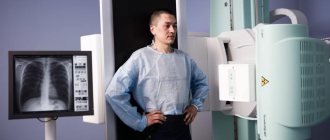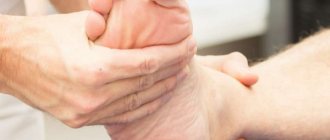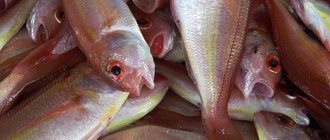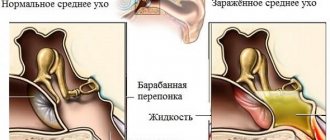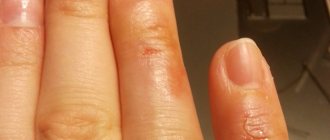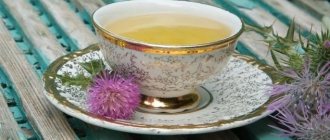Today, among all infectious diseases known to science, malaria is one of the most dangerous. Every year, up to 500 million people are officially registered as infected, up to 3 million of whom die. At the same time, according to scientists, mortality is expected to double in the next 20 years due to the emergence of new, drug-resistant plasmodia (“parasites”). Ninety percent of infections occur in sub-Saharan Africa. The disease poses the greatest danger to children, the elderly, pregnant women and people with reduced immunity. Malaria untimely ended the lives of Alexander the Great, Genghis Khan, Dante, Michelangelo and other famous personalities of our civilization.
Causes of malaria
Many people wonder why malaria is common in wetlands. Malaria is an acute infectious disease that is usually transmitted through blood. The cause of infection is some species of mosquitoes that prefer to live in waterlogged areas with a hot climate.
The carrier of the infection is the malaria mosquito
The causative agent of the disease is a parasitic microorganism called Plasmodium. More than 150 varieties of Plasmodium are known, which cause diseases in various animals. Only 5 species among all can infect humans. Symptoms will vary depending on the pathogen:
- Plasmodium falciparum. This variety is considered the most dangerous and widespread. The disease malaria occurs in a severe form. It is difficult to treat.
- Plasmodium vivax. Just like the previous species, this malaria parasite is very common, but less dangerous. Usually lives in India, South and Central America. Individuals of such a pathogen can remain in the liver for a long time, which leads to repeated repeated development of the disease after long-term treatment and even after recovery.
- Plasmodium ovale. This parasite is commonly found in Africa. Like the previous parasite, it is capable of remaining in the liver for a long time and provoking the re-development of malaria several years later.
- Plasmodium malariae. This variety is much less common than the others. But the difficulty of treatment lies in the fact that it is difficult to make a diagnosis if the causative agent is just such a parasite. This is due to the fact that a very small number of Plasmodium individuals may be present in the blood. It will take several years to fight the disease.
- Plasmodium knowlesi. It provokes the development of malaria in monkeys, but there have been several cases when such plasmodium was found in human blood. As a rule, it is found only in Malaysia.
The culprit for the development of malaria can only be the mosquito of the genus Anopheles. In total, no more than 20 widows of dangerous mosquitoes are known that can transmit malaria pathogens to humans. Their peculiarity is that they bite at night. In addition, their reproduction occurs in water.
The development of malarial diseases occurs only if the pathogen enters the human blood. There are 3 main methods of infection:
- a mosquito bite that was previously infected with Plasmodium;
- transfusion of infected blood or organ transplantation from an infected person;
- from an infected mother to the fetus during pregnancy.
Patients who suffer from malaria are not dangerous to other people, since they cannot infect them.
Routes of infection
Malaria is not without reason called bad air disease or swamp fever. In wetlands with a humid climate, polluted air and poor living conditions, malaria mosquitoes reproduce faster and transmit the infection more easily. The cause of the disease is not the mosquitoes themselves, but parasitic protists of the genus Plasmodium and Plasmodium falciparum (Plasmodium).
Interesting fact: in 1886, thanks to the French scientist Charles Louis Alphonse Laveran, plasmodia were identified, which became the first case in the history of medicine when protozoa were recognized as the cause of a disease.
The structure of Plasmodium, the parasite that causes malaria.
Children under 10 years of age living in tropical regions are most often at risk of contracting malaria. Of these, the disease is spread mainly by traveling caravans and researchers who did not receive vaccinations or they were ineffective. Also at risk are all people with reduced immunity and the human immunodeficiency virus.
The following routes of infection have been officially registered :
- Transmission - direct infection through a malaria mosquito.
- Parenteral - through blood transfusions or non-sterile syringes.
- Transplacental or perinatal - from a sick mother to the fetus or newborn.
Under normal conditions, it is impossible to become infected with malaria from a patient by airborne droplets or tactile contact. The nature of malaria is recognized as massive: 350-500 million cases of infection annually, of which 1.3 to 3 million are fatal. Up to 90% of cases are recorded in African regions. The remaining 10% affects India, Brazil, Sri Lanka, Vietnam, Colombia and the Solomon Islands. In Russia, the epidemiological season begins in the summer - from June to September, but imported diseases are recorded all year round.
According to historical data, malaria has existed for more than 50 thousand years, and many great researchers and historical figures are among the famous people who fell ill and died from this cause. For example, Genghis Khan, Alexander the Great, Dante, Columbus, Cromwell, Michelangelo, Byron and many others.
Types and symptoms of malaria
I distinguish 4 forms of malaria, each of which has certain characteristics and treatment methods. However, for all varieties there are common signs of malaria, which are as follows:
- development of anemia;
- splenohepatomegaly, that is, a simultaneous increase in the size of the liver and spleen, since they have common channels of venous blood and lymph;
- increased body temperature;
- increased sweat production;
- fever.
As for the forms of the disease, they are as follows:
- Three days. A person experiences attacks that are accompanied by headaches, chills, and nausea. Feeling tired all the time. This disease is considered fleeting. It is characterized by frequent alternation of attacks of fever and chills, and increased sweating. Usually attacks appear in the morning or before lunch. Within a couple of weeks, anemia develops with this form of malaria.
- Malaria oval. In terms of symptoms and clinical picture, it resembles the previous form, but the incubation period lasts about 11 days, but sometimes it can be much longer - the maximum known result is 52 months. This form is characterized by alternating attacks of fever every other day. They usually occur in the evening. The causative agent of the disease is the protozoan Plasmodium, which is a parasitic protoworm. The disease lasts for 3-4 years, but there are cases when it lasted up to 8 years.
- Four-day malaria, the incubation period of which is 25-40 days. Bouts of fever will appear every 2 days. The disease can last 4 years or more (up to 50 years).
- Tropical malaria. With this form of the disease, a person suffers from insomnia, nausea, and convulsions. Appetite worsens, consciousness is confused. There were cases when bronchitis, hepatitis, and skin manifestations of malaria on the lips developed simultaneously. Kidney function deteriorates. The incubation period lasts 1-2 weeks.
Such infectious diseases have different symptoms, so it is difficult to immediately diagnose malaria in a person, since it can be confused with other ailments. It is because of this that it is not always possible to cure malaria.
Forms of the disease
The symptoms of malaria and further prognosis partly depend on the type of pathogen. Currently, there are several types of the disease:
- the biggest threat is tropical. It is caused by the parasite Plasmodium Falciparum. When this form occurs, complications appear, often preceding death. This type of disease is currently the most common.
- Plasmodium Malariae causes quartan malaria, attacks occur once every 3 days.
- Similar symptoms and attacks with a frequency of once every 2 days occur with three-day malaria caused by Plasmodium vivax and malaria ovale, the causative agent of which is Plasmodium ovale.
Diagnosis and treatment
Diagnosis of malaria includes a set of various procedures that are aimed at identifying the parasite in the blood. Before thinking about how to get rid of malaria, a complete diagnosis is required. It includes immunological and parasitic studies. In addition, laboratory diagnostics of malaria is carried out. Carrying out a full range of procedures is due to the fact that the causative agents of the disease and the trypanosome amoeba can be determined in the same way. The following procedures are usually prescribed:
- Blood test - biochemical and general. Such procedures will allow one to suspect the presence of malaria in a person. This is indicated by a reduced level of red blood cells and hemoglobin, platelets, a high level of lactate dehydrogenase, and the presence of lymphocytes.
- Studying the composition of blood under a microscope. This technique is the main one in determining the presence of malaria pathogens in the blood. In addition, you can also determine the type of plasmodium in order to select the optimal treatment option. Blood should be taken from a vein, then smeared in a thin layer on the stack and its composition studied. If malaria pathogens are not detected, then the procedure should be repeated a day later.
- Quick test. This technique allows you to find out whether a person is sick with malaria within 20-30 minutes. It is based on the determination of antibodies to malaria pathogens in the blood. The test is very sensitive.
- Polymerase chain reaction. This technique allows you to detect the genetic material of the parasite in the patient's blood. This diagnostic procedure is especially effective if there are few parasites in the blood, and examination under a microscope has not yielded results.
As soon as malaria is suspected, it is necessary to urgently hospitalize the patient and place him in the infectious diseases department. The patient is required to stay in bed constantly and drink plenty of fluids. A non-concentrated saline solution is best (it should be warm).
Treatment of malaria
Treatment of malaria involves the use of a medicine such as quinine. Previously, they preferred to replace the drug with chloroquine, but its effect is much weaker than the first drug. In addition, some varieties of Plasmodium (especially those common in Asia and Africa) are resistant to chloroquine. Quinine can be used not only to treat malaria, but also to prevent it. Almost all anti-malaria drugs have this property. Very effective drugs against this disease are quinocide and primaquine.
In addition, annual wormwood extract is often used for treatment. Research and development of artemisin-based drugs is now underway, so there is a possibility that treatment will take much less time. In addition to antimicrobial drugs, fluid is also infused through a vein to reduce the toxic effects of plasmodium on the patient’s body. Hemodialysis and hemosorption are also performed.
If you start treatment on time and choose the right medications, the prognosis is favorable. However, it must be taken into account that the immune system takes a very long time to recover after such an illness, so there is a possibility of re-infection.
Diet
Dietary nutrition for malaria involves not only a review of what is included in the daily diet, but also the methods of eating. Thus, during the treatment period, meals are divided into five times. All products are crushed before use.
A diet involves giving up a number of foods and replacing them with healthy ones. Recommended for use:
- dairy, vegetable and cereal soups only with water;
- boiled lean meat and fish (chicken, quail, hake and pike perch);
- all fermented milk products;
- millet, rice and buckwheat porridge;
- crackers from white and black bread;
- boiled, baked and raw fruits (apricots, plums and apples);
- boiled and raw vegetables (beets, carrots, zucchini, cabbage, cucumbers, potatoes and sweet peppers);
- fruit and vegetable juices;
- olive and vegetable oil.
In this case, it is necessary to exclude a number of foods from the diet until complete recovery:
- honey, sugar, salt and jam should be excluded completely or limited as much as possible;
- fatty fish and meat;
- Mushrooms are not recommended for consumption;
- beans, beans and asparagus;
- onions, spinach and sorrel;
- flour and baked goods (except for crackers from black and white bread);
- smoked, fried, salted and spicy foods;
- vinegar and spices;
- canned foods;
- sweets (chocolate, ice cream and cocoa);
- alcohol;
- sparkling sweet water;
- custard.
Remember that malaria is a very dangerous disease, one of those ailments that is better to prevent than to cure.
Complications and prevention
Malaria can cause various complications:
- Coma. The most severe form. It all starts with vomiting and headaches, then apathy appears, after which the person stops responding to stimuli.
- Insufficient kidney function in acute form.
- Toxic shock. Blood pressure sharply decreases, respiratory function is inhibited. There may be bleeding in the brain.
- Splenic rupture. There is a sharp pain in the abdomen on the left side under the rib.
- Intrauterine fetal death if malaria develops in a pregnant woman.
To prevent the development of malaria and its complications, preventive measures are required. They are as follows:
- Treat infected patients in a timely manner.
- Sterilize medical equipment.
- Carefully select donors for blood and organ collection.
- It is mandatory to use personal protection when a person is in dangerous territory. It is necessary to wear a net, protective clothing at night, and use repellents.
- It is recommended to carry out drug prophylaxis. 3-4 days before the planned trip to an area where there is a high probability of contracting malaria, you must start taking hingamine, quinine or other similar drugs, but only in prophylactic doses prescribed by the doctor. It is necessary to take medications throughout the entire trip, as well as for another 1-2 months after leaving the dangerous territory.
If you follow these rules, the likelihood of infection is very low. It must be borne in mind that there is no good vaccine for such a disease, since hundreds of strains of pathogens can be present in the same area. Of course, vaccinations have now been developed, but their effectiveness is no more than 40%.
There is no 100% protection against malaria
Mosquito nets are used everywhere, but this option is considered ineffective. It is necessary to additionally use powerful insecticides against mosquitoes. In addition, they are now engaged in genetic modifications and are trying to breed only asexual individuals, due to which the number of pests will significantly decrease.
Some countries have their own way of fighting malaria. For example, in the USA and countries in southern Europe they prefer to methodically drain swamps and kill mosquitoes with special chemicals, but this practice causes irreparable harm to nature.
Main manifestations
Both adults and children suffer from manifestations of the infection. “Malaria” is especially dangerous during pregnancy, when hormonal levels change. If emergency measures are not taken in time, after two days the swelling turns into watery but painful blisters. After ripening, they burst, the skin becomes covered with ulcers, which will heal for at least a week.
Advice: if the lip area turns red and blisters appear in the corners, apply antiviral cream to the skin or simply burn it with iodine to stop the spread of herpesvirus symptoms.
The photo shows the stages of development of herpes - from the active phase to the disappearance of the painful focus.
Stages of development of herpes.
Risk factors
Infection can occur in the womb. There are other causes of infection, which boil down to direct or indirect contact with a carrier of the virus or an infected object. Much less frequently, the virus spreads through airborne droplets.
After entering the body, the infection affects the nerve cells and remains there for some time. As the body's immunity deteriorates, microbes begin to multiply at a rapid pace, which is why rashes appear on the lips and other parts of the body.
The following factors contribute to the deterioration of the body's resistance:
- constant stress, depression;
- alcohol and smoking;
- diseases that directly affect the immune system: immunodeficiency virus, cancer pathologies, etc.;
- unbalanced diet;
- exposure to low temperatures;
- chronic lack of sleep (because of this, the body’s defenses seem to fall asleep, allowing the virus to spread to the entire body).
Bibliography
- World Health Organization. Malaria. Newsletter, June 2020. . Date of access: 07/31/2018.
- Malaria. — Journal “Bulletin of Infectology and Parasitology”. . Date of access: 07/31/2018.
- Bronstein A.M. Tropical diseases and medicine of traveler diseases - M.: GEOTAR-Media, 2014. - 528 p.
- Chebysheva N.V., Sergieva V.P. Medical protozoology: human parasitic protozoa. Textbook. - M.: GEOTAR-Media, 2012. - 264 p.
- Bronstein AM Malaria: clinical diagnosis, chemotherapy and prevention // Russian Medical Journal, 1998. - No. 21. - P. 115.
- Babady NE, Sloan LM, Rosenblatt JE, Pritt BS Detection of Plasmodium knowlesi by real-time polymerase chain reaction // Am. J. Trop. Med. Hyg., 2009. - Vol. 81. - P. 516–518.
Examples: what herpes looks like
Herpes is a viral disease that can occur on the lining of the mouth as well as on the skin in other parts of the body. First, a group of bubbles comes out, which are filled with liquid inside. After they burst and the liquid comes out, white pale crusts form, which last for several days and then gradually disappear.
The most common type 1 virus that can occur near the lips in the form of:
- Bubbles;
- In short;
- Ulcer.
There is another type of herpes; rashes can appear on the body almost anywhere. For a more accurate diagnosis (since there are different types of herpes) for yourself, you can look at the corresponding pictures or photographs. The most severe type is called necrotic, characterized by the formation of scabs on the blisters, and when they are removed, ulcers may appear. With this type of herpes, severe pain is observed.
The abortive appearance looks like individual nodules on inflamed skin. There is another type of herpes, which is called bullous; sand-like blisters first appear, which gradually merge, forming large growths. The hemorrhagic type is characterized by the formation of hemorrhagic spots, which can transform into precise hemorrhages, ulcers, and pus and scabs may be observed.
What is this
The infectious disease malaria is caused by special microbes Plasmodium
. Plasmodium are animals, not bacteria (although they are microscopic unicellular protozoa); Before infecting the next hordes of mosquitoes with your blood, they have to capture you through the bite of the mosquito that ate you. After all, you are only an intermediate host; the main target of malaria is mosquitoes.
Now the diagnosis is made with convenient test strips like for pregnancy, only you need to drop a drop of blood and not urine.
In a mosquito
In the stomach of the insect, asexual forms of plasmodia are digested, and sexual forms multiply and produce an evil egg (oocyst), which attacks the stomach of the mosquito and releases offspring (sporozoites) into the blood of the poor dipteran; sporozoites settle in the salivary glands. The mosquito remains combat-ready for up to 50 days, then the malaria nursery neutralizes itself.
When bitten, along with saliva (the kind that makes mosquito holes on the skin itch), sporozoites enter your bloodstream and begin their modest feast there.
In you
After a mosquito bite, invaders fly through the bloodstream to the liver within half an hour, where they turn into an asexual version of plasmodium ( schizonts)
), and there, during the incubation period, they are divided into tens of thousands of subsequent developmental forms (
merozoites
).
The latter go for a walk back into the blood and board the red blood cells floating by, in which they develop cyclically in accordance with the attacks: the four-
day one develops for three days and gives an attack on
the fourth
.
An attack of malarial fever is a reaction of the brain stem (the thermoregulation center) to a massive attack by altered proteins on destroyed red blood cells, on the plasmodia themselves and on the products of their vital activity.
In the interictal intervals (apyrexia), plasmodia quietly reside in red blood cells and liver cells, from where they show the doctors the signs and twist the figs with their flagella: inside your cells they are protected from most drugs.
When does herpes wake up?
The malaria virus is contagious and is transmitted to a healthy person from a sick person by touching or kissing.
If herpes is already inside the body, then certain factors can activate it:
- Reduced immunity.
- Drinking large amounts of coffee.
- Addiction to alcoholic beverages, smoking cigarettes.
- Severe food poisoning.
- A state of stress, overwork due to excessive workload.
- Colds, viruses living in the body.
- Hypothermia or overheating of the body.
Folk remedies
One of the easiest ways to quickly cure painful pimples on the lips is to prepare a miraculous tincture from ordinary lemon balm. Pour a few leaves of the plant with a small amount of alcohol (it is better to take medical alcohol) and leave for 2 days. Malaria on the lips is wiped several times a day with the prepared product. The process is quite painful, but if you use a soft cotton pad and do not cause irritation, everything will go smoothly.
Another wonderful, but rather unpleasant way to get rid of the disease is with the help of hot tea. Brew a cup of drink, dip a spoon into it, after a few seconds take it out and apply it to a cluster of pimples. The disease will go away in just a few days, and ulcers may not even appear.
Malaria can be treated even before the formation of blisters, at the first signs of the disease - burning and itching on the lips. You can use iodine for this. Apply the product in a thin, even layer to the area where herpes is expected to appear. Usually one procedure is enough for the disease to recede.
Malaria on the lips is successfully treated by a wonderful home doctor, which is garlic. To prepare a miracle cure, take a clove of garlic, use a press to turn it into a homogeneous mass and mix with a small amount of yogurt (natural, without additives) and honey
Apply a compress to the blisters several times a day, and after the procedure, carefully remove the residue with a cotton pad.
It is worth noting that both women and men can use this product. However, here it is necessary to follow the rule that states that for fair skin, a sunscreen with a high numerical SPF coefficient should be used, which indicates the degree to which the skin absorbs ultraviolet radiation. You need to use this cream from about March. Apply half an hour before going outside.
Experts recommend that people who are prone to the appearance of freckles do not go outside during the “peak” of solar activity: from eleven in the morning to three in the afternoon.
The formation of the pigment substance melanin, which is responsible for the appearance of freckles, is prevented by vitamin C, so its consumption is recommended by experts.
A variety of modern whitening lotions and creams allow you to get rid of freckles that have already appeared on your face on your own. However, their use is fraught with various dangers, which can be caused by simple ignorance. In order for the effect to be maximum, you need to be aware not only of your own skin type, but also that it takes a significant period of time to whiten the skin. In addition, the use of bleaching products is recommended in the evening so that the reduced resistance of the skin to sunlight does not cause burns.
A huge number of folk remedies can also quickly get rid of freckles. The first on this list is a decoction of chopped fresh parsley, which should be infused for at least three hours. It is recommended to wipe your face with this decoction twice a day: morning and evening.
The next most popular is a decoction of dandelion root, which is made and used similarly to a decoction of parsley. Herbs such as yarrow, licorice and bearberry have no less effect.
A fresh cucumber mask and berry masks made from red currants and strawberries are also popular, along with freshly squeezed cucumber juice.
Using citric acid to whiten your face requires special care because it can cause irritation: the half-hour procedure must end with the application of a nourishing cream
